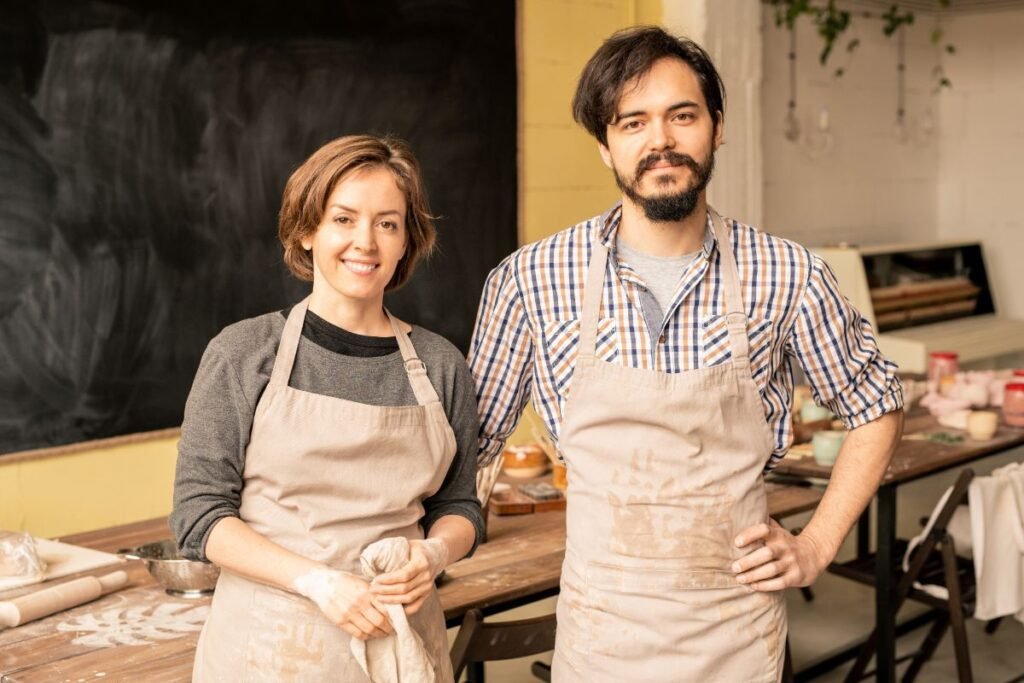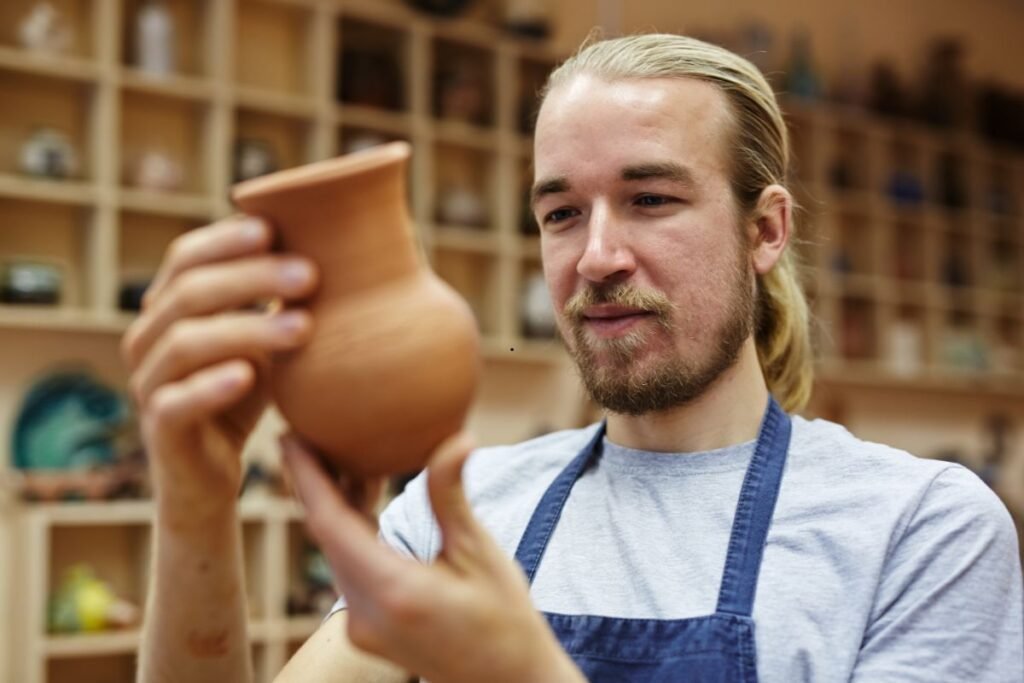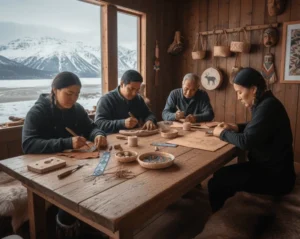Bethel, Alaska, on the map, can just be noted as a small town. Still, this town is a whole of people with a rich culture, beautiful history, and a wonderful sense of community. Bethel is known today as a melting pot of cultures in the Yukon-Kuskokwim Delta. However, most of its population is comprised of Yup’ikYup’ik native people. Most of the cultures of Bethel can, therefore, be attributed to these Indigenous people, and at the core of this culture are the cultures of the local artists.
Local artisans from Bethel are not just artists but historians, cultural custodians, and architects of society. They significantly contribute to the continuity of Bethel’s cultural, economic, and social values, thus centralizing the town’s growth and development.
1. What is Meant by Local Artisan?
A local artisan is a person who crafts products by hand using techniques that have been handed down from one generation to the other. These artisans usually create unique, traditional, and cultural commodities that portray the society’s traditions and beliefs. These artisans may perform beadwork, carving, weaving, etc. Every art form has a message about the land, people, and heritage of the region of Bethel.
What is an Example of a Local Artisan?
A simple example is thinking about a Yup’ikYup’ik elder who spends several hours carving a wooden mask and passing the art from one generation to another. This mask represents people’s beliefs, stories, and history; it is not merely an ornament or an accessory. Likewise, a fashion designer in a region will produce baskets or clothing from natural resources grown in the area, and every stitch will be engraved with thousands of generations of weaves.
Why are Local Artisans Important?
The local artisans should be credited for their valuable efforts towards maintaining cultural values. By doing so, they sustain customs, educate the youth, and make history come alive. In addition, local artisans utilize their work to create unity and pride by giving culture a face that helps keep the craft relevant even in the contemporary world.
2. Cultural Preservation
In Bethel, native artisans preserve Indigenous culture in Alaska, contributing significantly to the rich legacy of Alaska Native art. They employ their artworks to retain the cultural traditions of the Yup’ikYup’ik and other Native peoples, safeguarding what is passed on from one generation to the other. These artists are always in touch with their culture, and the art produced is an alive narration of the culture that defines Bethel.
Maintaining Heritage Through Crafts
Handmade production such as beadwork, carving, and weaving, among others, are not just art forms; on the contrary, they are fundamental aspects of cultural sustainability. For example, beading is a traditional activity for Yup’ik women, and each is a precise link to the native populations. Yup’ikYup’ik carving is another regional specialty; men primarily practice it to make things used in shamanism, such as Sewing, another vital form of the craft, employs the creation of clothes and baskets that are functional items but can also be seen as sacred due to the interaction between the community, the land, and the natural resources.
Showcasing Artisans’ Work
Bethel has cultural functions and festivals, some of which help artisans promote their products. These events are not only honors of art but also a tool to gather people in one place. That is why such events as the Cama-i Dance Festival help artisans promote products and introduce other people to its cultural essence. These assemblies are critical regarding the maintenance of traditions and the fortification of the bonds of togetherness.

3. Economic Impact
Artisans are an essential source of income in Bethel, and most of them operate from their homes. Not only are their products used amongst themselves, but people from other regions, including tourists and collectors, are also interested in purchasing products. In fact, by selling their products, artisans can earn an income that enables them to care for their families and support the economy. This economic activity is significant in a place like Bethel, which generally needs more employment or business outlets.
The Rise of Artisan Markets and Local Shops
In recent years, there have been more and more artisan markets and local stores in Bethel than in previous years. These markets maintain a personal shopping environment where growth may be achieved by allowing artisans to sell their products to the target consumers. The local arts and crafts outlets are also becoming more numerous. Once again, these outlets are spread from traditional arts and crafts to what may better be described as new-age Indigenous art products. This new wave of artisanal markets benefits the artisans and boosts Bethel’s economy.
Supporting Economic Sustainability
Purchasing locally made items is not just a way for hospitality and tourism to embrace culture; it is putting steps toward economic development. This way, supporters of the said talents support the local economy by buying locally made products and avoiding transacting with intermediaries to pass on a cut of their earnings. This support is also instrumental in building a stable base of income for the artisans so that they can keep practicing their skills and enhance the economic economy of Bethel. Also, the fact that such artisans can succeed means that many more people can take similar action, leading to the development of different sectors, which, in total, make up a more robust economy.
In 2022, Bethel’s total GDP was $782 million, with local artisans contributing significantly through their work in markets, shops, and cultural events.
4. Social Influence
Art has always played a significant role in community formation, and in Bethel, artists use art to build the community. In their works that include collaborations, workshops, or other community-based activities, these artisans help people interact and listen to one another’s stories. The process of creating and engaging in the appreciation of art helps to create a bond among the community members.
Art as a Unifier
Bethel is a rather diverse community, and art can be seen as a link between the different cultures and the different strata of the society. It is widespread for local artists to work with people from different origins, and their art pieces depict the community’s-community’s culture. Such projects play a role in creating tolerance and understanding and forming more accepting societies. Art is a method of communication that can be used by all members of society regardless of their cultural differences.
Inspiring the Next Generation
The impact on the youngsters is the most evident social influence linked to the local artisans. Most of the artisans in Bethel perform as tutors, empowering the youth with the skills and information they need to practice the craft. This knowledge transfer is vital in preserving culture and guarantees that the culture is not forgotten. Since young people are encouraged to participate and create art, local artisans thus play a crucial role in developing more creative minds, analytical thinking, and appreciating one’s culture.

5. Environmental Stewardship
Many local artisans in Bethel uphold the significant value of sustainability. The artisans making these artifacts rely on readily available and biodegradable materials, including wood, bone, and fiber. Thus, using such materials, artisans minimize their contribution to environmental degradation and enhance their link with the land. This aligns with the Indigenous approach to crafting, which has always protected the environment and resources used in making these artifacts.
Environmental Awareness
Local craftsmanship is closely connected with the environment, and the objects created by the locals usually depict respect for nature. In their work, these artisans express advocacy for environmental conservation to inspire people to embrace the environment. Whether through the choice of materials used or through the subject matter portrayed in their pieces, artisans within Bethel are instrumental in encouraging environmental responsibility.
Conclusion
Alaska’s Bethel artists are not only wonder artists but also the soul of their community. They help to keep the spirits of their culture alive, enhance economic breakthroughs, and act as social assets of the community. Through their work, they preserve history, create new history for Bethel, and ensure the people are always engaged.
Thus, it is of great importance to encourage and support these artisans as Bethel expands its operations, appreciating their service and guaranteeing that they are well equipped to do the job. In this way, Bethel will be able to retain its cultural and economic values and share the stories and accomplishments of the people of this remarkable place for as long as possible.












